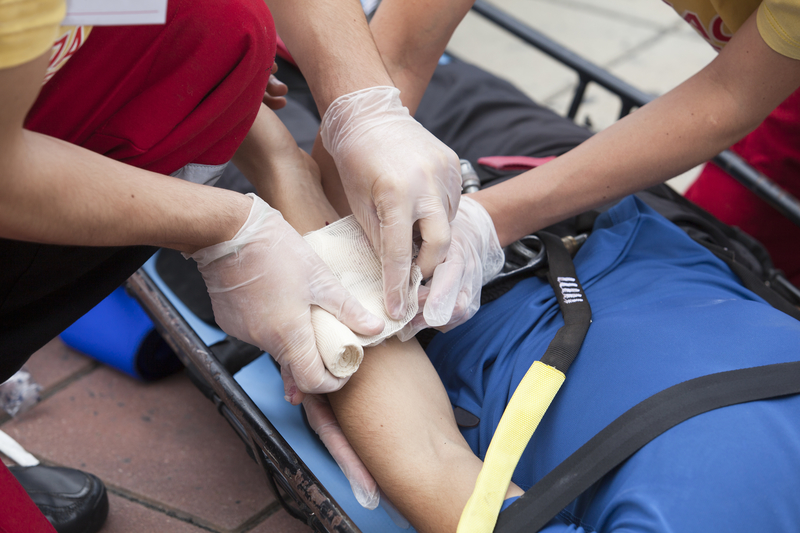While trauma and serious injury are not major risks in everyday life, they become incredibly dangerous during and in the aftermath of a survival situation.
Knowing what to do is critical to treating yourself and to make sure you can address an injury on another person should the need arise.
First Aid Steps For Common Bleeding
• When bleeding comes from the mouth the victim should be laid on his side or with his head tilted forward so that the blood does not drain into the mouth or nose and choke him.
• If possible, lay the victim down and elevate the injury above the level of the heart to slow or stop the flow of blood. Note that this should not be done in the event of a fracture.
• If the wound is on the side of the body, the victim should be lying down with the injury on the upper side.
• Remove the clothing or anything else that obstructs access to the injury so that a clean dressing and bandage can be applied.
• When the bleeding is severe, the bandage needs to be tight at first but when the bleeding subsides the bandage should be cut, but not removed so as to not disturb the wound, and a new loose bandage should be applied over the original dressing.
• If blood soaks through the original bandage, don't remove it – just add a new bandage over the original, but to a larger area, and apply it more firmly than the first one. You might also need to use more layers.
• Immobilization of the injured part will also help control bleeding.
• Shock should be expected in the event there has been a lot of blood loss or the wound is severe.
Acupressure for bleeding control
Points To Remember
1. Never wash the wound except in the case of a dog bite or acid burns.
2. Never try to remove metal fragments or pieces of glass unless they are superficial and can be easily removed.
3. Never put an antiseptic into the wound.
4. Never touch the wound with your bare fingers to avoid contamination of the injury.
5. Only use a gauze or a dressing that covers your fingers and thumb or sterilized forceps to remove any superficial metal or glass fragments.
6. Never leave the wound exposed to the open air and potential contaminants.
If you have ever injured yourself on a family outing without your usual slate of medical treatments at your disposal, you have a small taste of what it is like to get injured in a survival setting.
Little injuries carry new risk, medium injuries become potentially dangerous and severe injuries can become life threatening without proper treatment.
Knowing how to address each type of injury using the supplies and equipment at hand can literally mean the difference between life and death; to learn more about survival first aid, check out Hub Pages.
